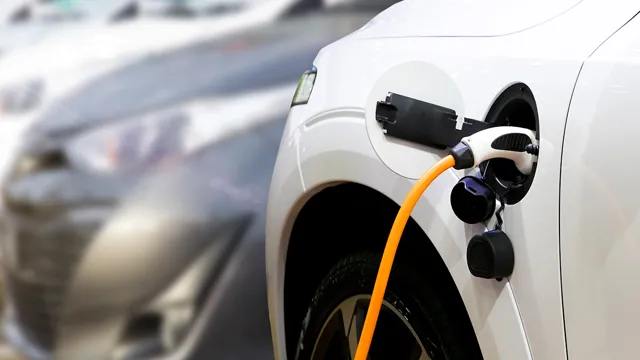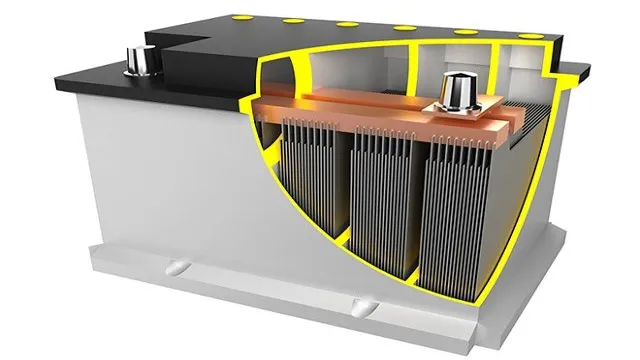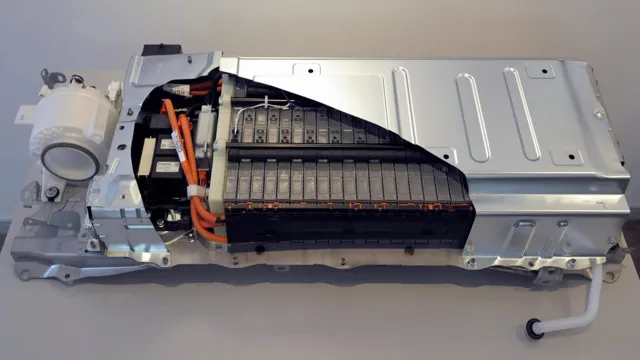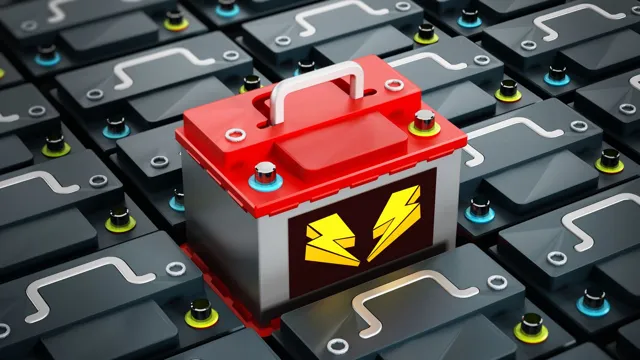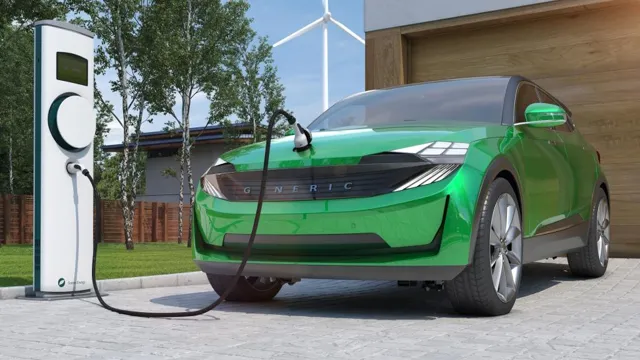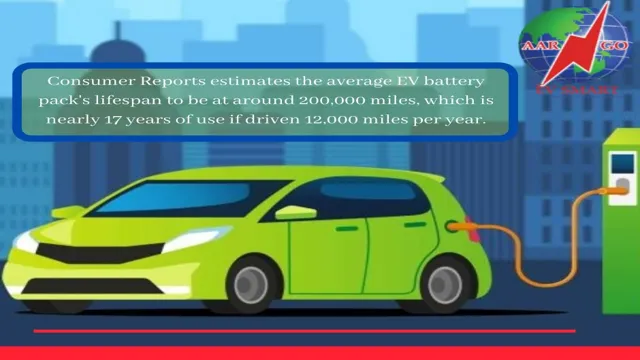Rev Up Your Ride: A Comprehensive Guide to the Perfect Battery Setup for Your Electric Muscle Car!
Imagine the thrill of driving a fast, sleek muscle car without any harm to the environment. With electric vehicles becoming increasingly popular, people are finding innovative ways to convert their gas-powered cars into electric ones, and muscle cars are no exception. However, for an electric muscle car, a powerful battery setup is crucial to provide maximum performance.
In this blog post, we’ll explore the ins and outs of electric muscle car battery setups and how they can transform your ride into an eco-friendly, high-performing machine. So, fasten your seatbelts and let’s get started!
Understanding Battery Power Requirements
When it comes to setting up a battery for an electric muscle car, it’s important to consider the power requirements. You’ll want to select a battery that can provide enough power to propel your car while also ensuring a reasonable driving range. The amp-hour rating is an important factor to consider, as it represents the amount of energy the battery can provide over a certain period of time.
The voltage of the battery also plays a role in determining the power output. It’s important to ensure that the battery voltage is compatible with the motor controller and other electrical components in the car. Additionally, you’ll want to consider the weight and size of the battery, as these variables can affect the overall performance and handling of the car.
By understanding the power requirements and selecting the appropriate battery, you can ensure that your electric muscle car is efficient and powerful.
Calculate Motor Power and Range Requirements
When it comes to electric vehicles, understanding the battery power requirements is essential. The battery powers the motor which drives the vehicle, so it’s important to calculate the motor power and range requirements based on the battery’s capabilities. The battery’s voltage, amp hour rating, and watt hour rating all play a role in determining the motor power and range.
Higher voltage batteries can handle more power, while higher amp hour and watt hour ratings indicate longer range. It’s also important to factor in the weight of the vehicle and any additional load, as heavier vehicles will require more power to move and will have a shorter range. By understanding the battery power requirements, you can ensure that your electric vehicle has the power and range necessary for your needs.
So, the next time you’re looking at electric vehicles, make sure you take a close look at the battery specifications to determine what kind of motor power and range you can expect.
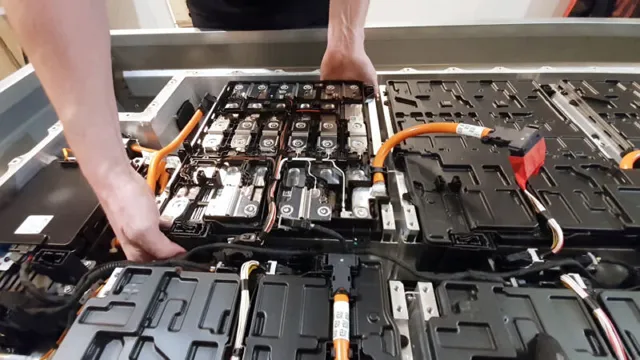
Assess Voltage and Current Draw for Electric Circuit
As we design and build electric circuits, it’s essential to understand the power requirements of the batteries that we use. Your circuits would require a certain amount of voltage and current to function correctly, and it’s crucial to assess these needs before selecting a battery. Consider the amount and type of components you intend to power and the power supply you’ll be using.
The battery capacity and discharge rate will depend on the circuit’s power requirements and the expected usage. For instance, your circuit may require several volts and tens of milliamps to operate efficiently. In this case, a small battery or a power source with a lower discharge rate may not provide enough power output, while a larger battery would be excessive.
By evaluating voltage and current needs for your circuits, you can choose the right battery, extend its lifespan, and reduce the chance of circuit failure. As we design electric circuits, the batteries are like the heart that pumps power through the circuit’s veins, keeping the components operating efficiently and staying on life.
Choosing the Right Battery Type
When it comes to converting an electric muscle car, choosing the right battery type is key to ensuring optimal performance and longevity. Lithium-ion batteries are a popular option due to their high energy density and fast charging capabilities, but they can also be costly. Alternatively, lead-acid batteries are more affordable but have a lower energy density and may require more maintenance.
Ultimately, the choice between the two will depend on a variety of factors such as budget, driving range, and weight requirements. It’s important to consider all options and consult with a professional before making a decision. After all, the battery setup is a critical component in the overall performance of an electric muscle car.
Compare Lead Acid vs Lithium Ion Batteries
When it comes to choosing the right battery for your needs, there are a few factors to consider. Lead acid and lithium ion batteries are two of the most common types available, and each has unique benefits and drawbacks. Lead acid batteries are often relatively affordable and have a long history of use, particularly in automotive applications.
However, they are heavier and less energy-dense than lithium ion batteries, which means they may not be the best choice for certain high-performance applications. On the other hand, lithium ion batteries are lighter and more powerful, making them a popular choice for everything from consumer electronics to electric vehicles. They also tend to have a longer lifespan and can be charged more quickly than lead acid batteries.
Ultimately, the right choice depends on your specific needs and budget. If you require a cost-effective, reliable battery for basic applications, a lead acid battery may be the way to go. However, if you need more power and energy density, or want a longer-lasting and more rapidly-charging battery, a lithium ion battery may be the better option.
Evaluate Weight, Cost, and Lifespan
When choosing a battery type, it is essential to consider weight, cost, and lifespan. Each type of battery has its unique characteristics that can impact its overall performance in your device. For instance, lithium-ion batteries are lightweight and have a longer lifespan than other battery types.
However, they can be expensive. On the other hand, lead-acid batteries are heavier and have a shorter lifespan but are much cheaper than lithium-ion batteries. When evaluating the types of batteries suitable for your device, you need to consider how long you need your device to function on a single charge, the weight capacity it can hold, and how much you are willing to spend to purchase the battery type.
Ultimately, choosing the right battery type that best fits your device’s needs can enhance its overall performance and ensure less downtime. So, take your time, weigh your options, and make an informed decision.
Select Battery Capacity and Voltage
When it comes to selecting the right battery for your needs, there are a few key considerations to keep in mind. One of the most important factors to consider is the battery capacity and voltage. Battery capacity refers to how much charge the battery can hold, while battery voltage refers to the electrical potential of the battery.
Choosing the right battery type depends on your specific needs and the intended use of the battery. For example, if you need a high-capacity battery for a longer duration, you may need to sacrifice some voltage. This is because higher capacity batteries typically have lower voltage, while high voltage batteries often have lower capacity.
It’s important to find a balance that meets your needs without sacrificing overall performance. Ultimately, the right battery choice will depend on your unique requirements, so be sure to do your research and consult with a professional if you’re unsure which type to choose.
Installing and Maintaining Your Battery System
If you want to install a battery system in your electric muscle car, it’s important to take some steps to ensure it’s properly set up and maintained for maximum performance. The first step is selecting high quality batteries with enough capacity to power your car. You’ll also need to install an appropriate battery management system to regulate charging and discharge, as well as protect against overcharging or undercharging.
Additionally, regular maintenance such as checking and balancing the battery cells, cleaning terminals, and ensuring proper ventilation is crucial to prolonging the life of the battery system. A well-maintained battery system can give your electric muscle car a longer range and improved acceleration, making it a worthwhile investment for any EV enthusiast. So, take the time to do your research, choose the right components, and commit to a regular maintenance routine to enjoy a smooth and reliable ride in your battery-powered muscle car.
Design the Battery System and Connections
When it comes to setting up your battery system, it’s important to ensure that everything is connected correctly and that the system is maintained properly to get the most out of it. First, consider the size and requirements of your battery system, including the type of batteries you’ll be using and how they will be connected. You may need to work with a professional electrician to make sure everything is set up safely and correctly.
When it comes to maintenance, make sure to regularly check the connections and keep the batteries clean and free of debris. Ensuring your battery system is set up and maintained properly will not only help extend the life of the batteries but also ensure that your system is working efficiently to power your needs. Don’t forget to also consider any safety precautions, such as properly venting any gases, to ensure that everything runs smoothly.
By following these steps, you’ll be able to set up a reliable and effective battery system to power your needs.
Ensure Proper Charging and Discharging
When it comes to installing and maintaining your battery system, a crucial aspect to consider is ensuring proper charging and discharging of the batteries. Failure to do so can result in reduced battery life and even permanent damage. To ensure proper charging, it’s essential to use the correct charger for your battery type and to follow the manufacturer’s instructions carefully.
Overcharging can cause excess heat buildup and lead to damage, while undercharging can result in reduced capacity. Discharging also needs to be carefully managed, as deep discharging or leaving batteries unused for extended periods can cause sulfation, which can damage the battery. By monitoring and managing your battery’s charging and discharging cycles, you can ensure optimal performance and longevity.
Remember, taking the time to properly maintain your batteries can save you from costly repairs or replacements down the road.
Additional Tips for Optimal Battery Performance
When setting up your electric muscle car’s battery, there are some additional tips to keep in mind for optimal performance. First and foremost, always follow the manufacturer’s recommendations and guidelines. This includes proper charging procedures and maintenance schedules.
It’s also important to consider the temperature your car will be operating in. Extreme temperatures can negatively impact your battery’s performance and lifespan. Keeping your car in a cool, shaded area and avoiding rapid temperature changes can help prolong your battery’s life.
Additionally, regular battery tests and inspections can catch any issues early on before they become bigger problems. By following these tips and staying on top of your battery’s maintenance, you can ensure the best possible performance from your electric muscle car’s battery setup.
Conclusion
In conclusion, the battery setup for an electric muscle car is like the heart and soul of the vehicle. Without a proper battery setup, the car loses its strength and power, just like an athlete without their muscles. It’s not just about having a big battery, but also about having a balanced setup that optimizes performance and efficiency.
So, let’s charge up those batteries, rev up those electric motors, and show the world that electric muscle cars are not just a fad, but the future of high-performance vehicles.”
FAQs
What kind of batteries are needed in an electric muscle car?
Lithium-ion batteries are commonly used in electric muscle cars due to their high energy density and long lifespan.
How long does it take to fully charge the batteries in an electric muscle car?
The charging time varies depending on the charger used and the capacity of the batteries, but it can take anywhere from several hours to a full day.
Can I use solar panels to charge the batteries in my electric muscle car?
Yes, solar panels can be used to charge the batteries, but it requires a larger array of panels due to the high energy requirements of an electric muscle car.
How often should I replace the batteries in my electric muscle car?
The lifespan of the batteries depends on how they are used and maintained, but on average, they may need to be replaced every 5 to 7 years.
